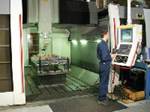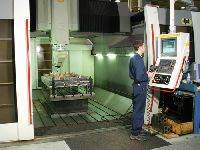Tooling Transfer: Chaos or Calculated Opportunity?
Today there is significant pressure on OEMs and Tiered suppliers to transfer existing tooling to safer ground. This has presented prepared moldmakers with great opportunity.
Thus far the year 2009 has been very dry for moldmakers, as industry experts and economists have predicted. With little in the pipeline, bankruptcies are expected to rise by 50 percent to 70 percent this year and the ripple effect will be felt for quite some time. This unfortunate situation—with all of its chaos and calamity—will put significant pressure on OEMs and Tiered suppliers to transfer existing tooling to safer ground.
Automotive industry specialists, Harbour-Felax Group (see Be Proactive, Not Reactive), have stated that tooling transfers are expected be massive right now. The critical component will be how efficient suppliers can be in managing transfers in a relatively hostile climate. OEMs and tiered suppliers have pared down staffing and are cutting resources to the bone. They don’t have the structure and project management support to effectively manage transferring the mass that is projected.
Opportunity Is Knocking
Moldmakers and molders who have developed a clear-cut process to control tooling transfers will have the most calculated opportunity to capture business in a spiraling economy. Moldmakers and molders need to invest in the art and practice of project management if they want to add value to tooling transfers through a closely knit full service tooling and production environment.
You need to develop a detailed process of coordinating transfer tooling and controlling the supply of the parts, on-time, within the quoted pricing and cycle times. The most influential factor for success is highly efficient project management and constant communication. In addition to experienced mold design engineers, toolmakers and process engineers in one location that are able to act quickly to tooling conditions.
The transfer process is rarely without challenges and carries a high level of risk for the customer and for those receiving the tools. Effective project management remains the most successful weapon against getting burned and meeting deliverables. Be prepared to sit down with your customer or supplier if you’re moving tools and walk through the coordinated effort. Don’t get caught up in the game of working “it” out later. Molds will arrive on your doorstep in surprising condition due to wear, age, lack of preventative maintenance or even outright abuse. It’s best to identify these conditions up front and know how you plan to resolve them sooner rather than later.
Controlling the Variables
Calculating the level of business opportunity involved with transfers depends highly on efficiency and due diligence of the process. Traditional variables include expectations for; PPAP/Quality, accounting/receivables, timing and scope of the molding/maintenance, raw materials, costing, shipping/receiving, purchasing/production control, mold assembly and mold set-up, tool design and engineering, and most importantly the role of project management. Transfer tooling requires you to expect the unexpected.
Responsive moldmakers and molders have identified a clearly defined path that receiving transfers will take. Some short-term thinking companies will strategically rush the process to get a supplier to commit to delivery and final pricing before all of the skeletons are out of the closet. This is a dangerous situation that only assures that the molds will be moved again soon. Most tooling transfers will occur in response to a dire situation and present the need to quickly move assets to a more stable supply system. This is where responsive customer service and opportunity can fill the pipeline.
Action plans start long before the molds begin arriving at the dock and constant communication is in place. The following list is not all-inclusive but provides for a foundation of success. Flowcharting your process before you consider taking on transfer tooling and defining the specific communication requirements for each stage of progress is recommended (see Sidebar).
The variables are endless. Volumes tend to be much lower or nonexistent than estimated. Resin procurement then becomes a key issue for minimum order quantities, delivery schedules, mold maintenance and storage and more importantly—profitability.
Progress reports serve as a good resource in managing each tool as a project with the project manager controlling proactive handling of paperwork, runners, sample parts, part prints, tooling prints and communication. Approximately 30 percent or less of transfer tools will come with drawings. Half of those are old paper drawings with CAD models rarely provided. Reestablishing optimum molding processes through scientific molding principles is essential. Melt channels or material feed systems in older tooling are likely poorly balanced which create added challenges for quality, productivity and big headaches. For OEMs moving tooling and relocating molds to a financially sound, full-service moldmaker and molder is the first step to ease the pain.
Achieving Success
Managing successful tooling transfers occurs when the art of project management is mastered. And that is a very fluid process. The economy is expected to eventually come back around to more reasonable levels. The cycle of consumption, product development, manufacturing and demand will again spur growth in new tooling orders. For the time being, transfer tooling will rein in the current drought.
Related Content
Plastic Prototypes Using Silicone Rubber Molds
How-to, step-by-step instructions that take you from making the master pattern to making the mold and casting the plastic parts.
Read MoreTreatment and Disposal of Used Metalworking Fluids
With greater emphasis on fluid longevity and fluid recycling, it is important to remember that water-based metalworking fluids are “consumable” and have a finite life.
Read MoreHands-on Workshop Teaches Mold Maintenance Process
Intensive workshop teaches the process of mold maintenance to help put an end to the firefighting culture of many toolrooms.
Read MoreMoldmakers Deserve a Total Production Solution
Stability, spindle speed and software are essential consideration for your moldmaking machine tool.
Read MoreRead Next
Reaching Out to a Different Market to Survive Tough Times
This mold manufacturer has reassessed its market base and began dabbling in the energy industry based on its experience with CNC machining—making it a natural transition.
Read MoreHow to Use Strategic Planning Tools, Data to Manage the Human Side of Business
Q&A with Marion Wells, MMT EAB member and founder of Human Asset Management.
Read MoreHow to Use Continuing Education to Remain Competitive in Moldmaking
Continued training helps moldmakers make tooling decisions and properly use the latest cutting tool to efficiently machine high-quality molds.
Read More







.jpg;maxWidth=300;quality=90)







.png;maxWidth=300;quality=90)









